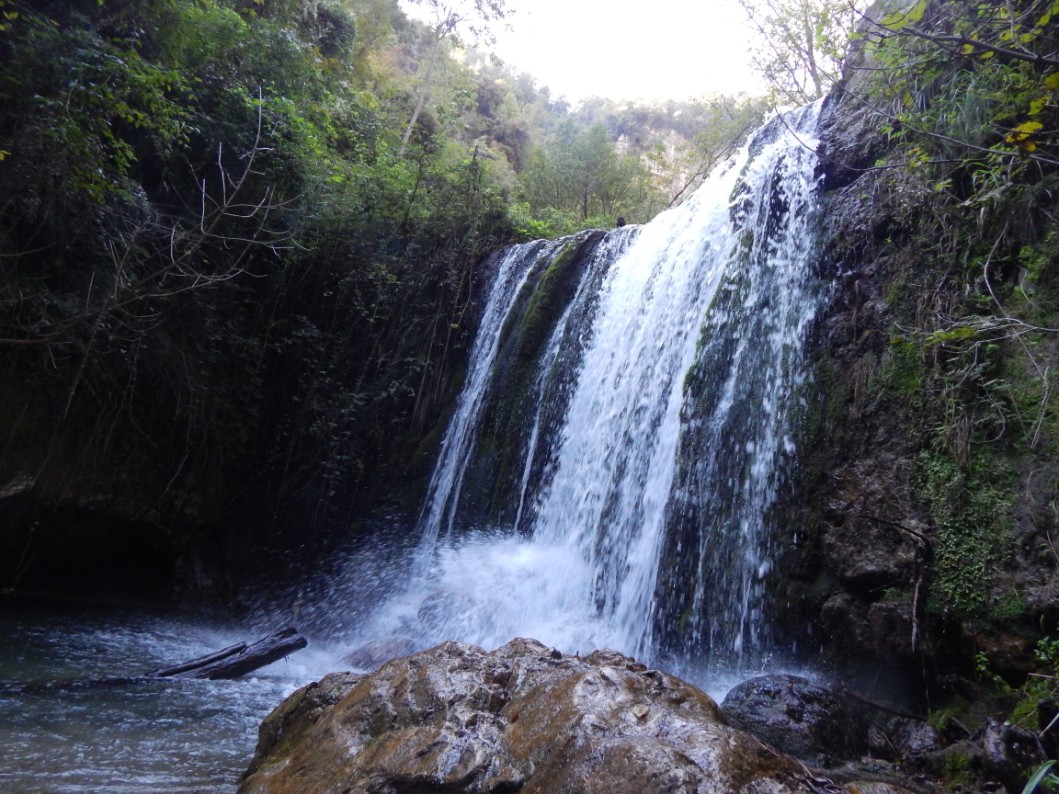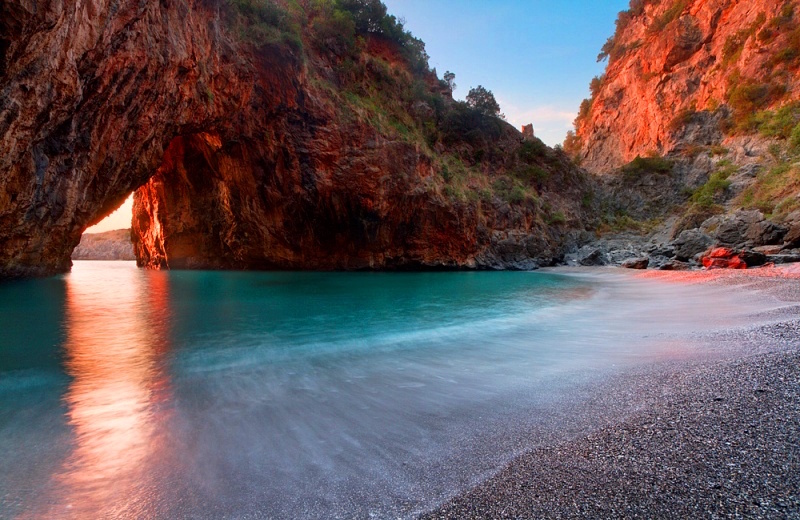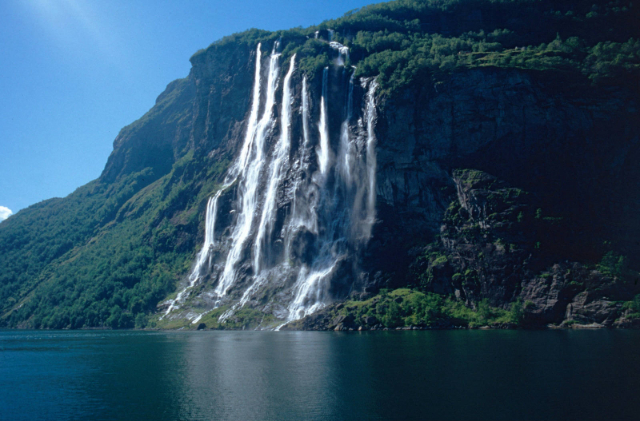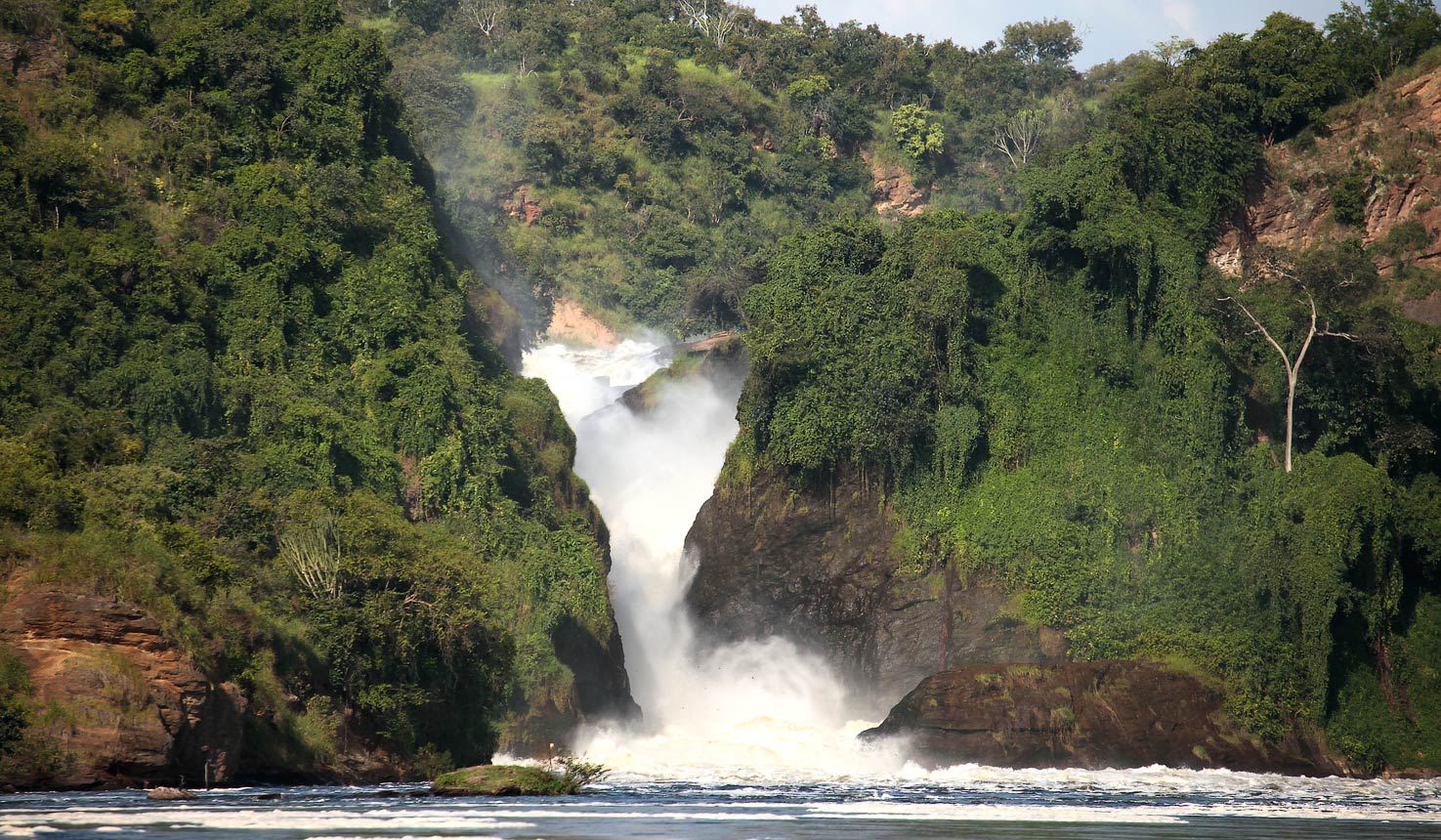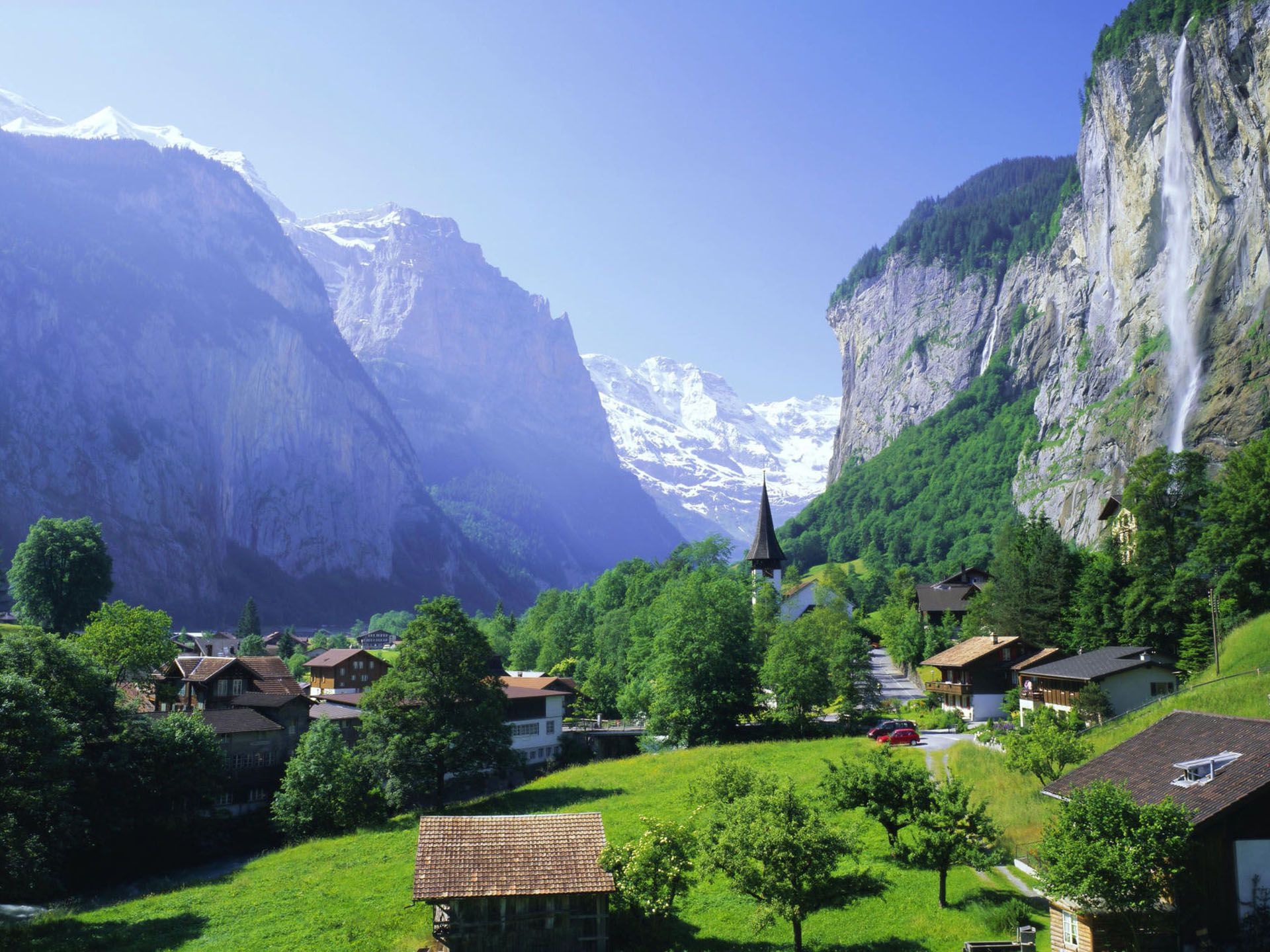his route starts from Pontone, a small hamlet of Scala overlooked by the ruins of the church of Sant’Eustachio (12th century), of which only the apse remains standing. Toward the valley stands solitary and austere the Ziro Tower, which dominates both Amalfi and Atrani at the same time. The itinerary allows you to travel through one of the most unspoiled and solitary corners of the park. Following the course of the Canneto torrent, one enters a narrow valley between the peaks of Mount Campanaro (1,058 m), Mount Rotondo (1,038 m), Mount Cervigliano (1,203 m) and Mount Ciavano (1,036 m), in the southeastern sector of the Lattari Mountains. Because of its abundance of water, this valley was home to several paper mills and an ironworks in the past. Metal came from the island of Elba, landed in Amalfi and was transported by mule down the valley to the ironworks, where processing took place. Energy was provided by water, and the heat needed for smelting was obtained by burning wood, which was available in abundance.
Before leaving Pontone, the trail goes through the alleys of the center and passes under lofts (arches under houses), where period household items are on display to remind us of the way people lived here in the immediate postwar period. In a few square meters are crammed cellar-shelves, baskets for provisions and transportation, shoes and clothes hanging on the wall, work and kitchen tools.
The environment of the reserve is very atmospheric, full of waterfalls and side arrivals that create ideal conditions for the proliferation of a very rich fauna and flora. Here you can easily see Woodwardia radicans, an endemic species of fern, and with a little luck you may come across small and rare amphibians such as the Apennine newt.
Descending toward Amalfi, the trail skirts some old and now abandoned paper mills that prelude a visit to a restored paper mill in the center of town.
Trail description.
The trail starts from the village of Pontone. From Piazza San Giovanni it immediately headsValle Dei Ferrieri northwest slightly uphill and, crossing pretty alleys, continues downhill between boundary walls bordering vegetable gardens and vineyards. From time to time a little door ajar allows a glimpse into the citrus groves, protected by characteristic pergolas made of long chestnut poles. Terraced vegetable gardens occupy every space wrested from the slope of the hillside. At the end of the paved section you enter CAI path No. 23 (coming from Chiorito, a hamlet of Amalfi).
The overlook on the left gives a magnificent view of the valley and Amalfi. On the opposite slope, high above, the houses of Pogerola can be glimpsed. Further upstream the valley is enclosed between high limestone walls, pierced by caves and ravines. On the same slope you can see a pipe coming down the mountain, hidden by vegetation: it is the penstock of an old power plant. Then you reach a fork: the path on the right goes up to the upper part of the valley, while the one on the left reaches the ironworks after passing over a small bridge. The building, now reduced to ruins, is huge and surmounts the valley with a wide arch under which the stream cascades into a waterfall.
Water is the predominant element in the valley: in the past it was used to move the machinery of the ironworks (and the Amalfi paper mills). The water was conveyed to the plant by a canal, still clearly visible, which in the last part runs over a short viaduct. At this point the path turns a sharp bend and heads downstream.
Passing instead under the bridge of the pipeline, one walks along the left bank of the stream, then crosses (after 5 minutes) to the other side, using a rudimentary bridge (trunk). A short uphill route allows one to gain about 50 meters in elevation, and then follow another culvert (that of the power plant) to two locks that prelude the fence of the Valle delle Ferriere State Nature Reserve. Here the stream receives several tributaries that form waterfalls of different heights, misting the water: the environment is wet and very cool even in the middle of summer. A beautiful waterfall and many specimens of the endemic fern Woodwardia radicans can be seen within the reserve.
You then return by the same road to the ironworks, and from here take CAI path No. 25, which, all downhill and always in the shade, leads to Amalfi in about 45 minutes. Along the descent, skirting the stream that forms numerous rapids and small waterfalls, you pass the ruins of old paper mills, which made Amalfi paper famous. A little further on the stream forks and flows about 20 meters lower than the path. A stony stretch follows, then begins the paved road that, among low walls and citrus groves as far as the eye can see, announces the gates of Amalfi. In the center of the town, in addition to the cathedral and the Paradise cloister, you can visit a recently restored old paper mill.
Notes
The reserve is fenced off: to gain access it is essential to contact the State Forestry Corps Visitor Center in Pontone in advance.
Practical information
Difficulty: E (easy, for everyone).
Height difference: about 300 m.
Walking time: 4 hours including the visit to the reserve.
Equipment required: hiking shoes, beanie, day pack, water, a jacket or sweatshirt to protect yourself from the humidity and coolness of the reserve.
